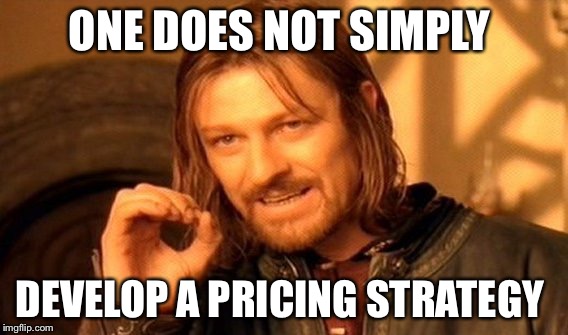Have you ever wondered how restaurants determine their prices? Well, in recent years, many restaurants have been turning to a strategy called dynamic pricing. Basically, it means that the prices can change depending on various factors like time of day, demand, and inventory levels. In this blog post, we’re going to explore the concept of dynamic pricing and how it can benefit restaurants. So, whether you’re a restaurant owner looking to optimize your pricing strategy, or simply curious about the latest trends in the industry, this post is for you!
What’s in this post:
- What is dynamic pricing?
- Dynamic pricing for restaurants
- The challenges of dynamic pricing
What is dynamic pricing?
Put simply, it’s a pricing strategy that adjusts prices in real-time based on different variables. This is in contrast to static pricing, where the prices remain the same regardless of demand or other factors. By implementing dynamic pricing, restaurants can optimize their revenue by charging more during peak hours or when certain dishes are in high demand. Essentially, it’s a way to make sure that prices accurately reflect the value of the product and the current market conditions. In the next section, we’ll dive deeper into how dynamic pricing works in a restaurant setting.
How can dynamic pricing work for your restaurant?
For starters, it can help increase revenue and profitability. By adjusting prices in real-time, restaurants can optimize pricing and capture more value from their products. This can be especially useful during peak hours or special events, where demand is high and prices can be adjusted accordingly. Additionally, dynamic pricing allows for more personalized pricing, which can lead to increased customer satisfaction. For example, a restaurant could offer lower prices for certain dishes during slow periods to incentivize customers to visit. Of course, implementing dynamic pricing requires a lot of data analysis and technology, but the potential benefits make it a worthwhile investment. In the next section, we’ll discuss some of the potential challenges of dynamic pricing in the restaurant industry.
What are the challenges of dynamic pricing in the restaurant industry?
One of the biggest challenges is maintaining customer trust and transparency in pricing. Customers may feel uneasy about prices changing in real-time, especially if they don’t understand why. To address this, restaurants can focus on transparency and communication, explaining the factors that influence pricing and how the dynamic pricing strategy works. Another challenge is ensuring that the pricing strategy is optimized for profitability without pricing out customers. This is where value-based pricing can come into play, where prices are based on the perceived value of the product to the customer. By focusing on providing value to customers, restaurants can maintain customer satisfaction while still optimizing revenue. Overall, dynamic pricing can offer many benefits to restaurants, but it’s important to consider the potential challenges and strategies for addressing them.
Summary
Dynamic pricing is a pricing strategy that adjusts prices in real-time based on different variables, such as demand and inventory levels. While this strategy can offer benefits such as increased revenue and customer satisfaction, there are also potential challenges to consider, such as maintaining transparency and balancing profitability with customer value. Successful implementation of dynamic pricing in the restaurant industry can involve strategies such as surge pricing during peak hours and personalized pricing through loyalty programs. Ultimately, implementing dynamic pricing requires careful analysis, but it can be a worthwhile investment for restaurants looking to optimize their pricing strategy and increase profitability.

